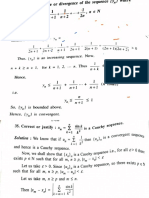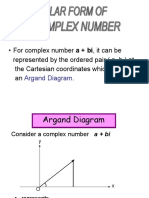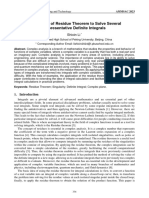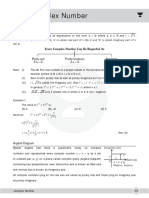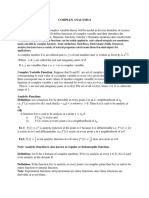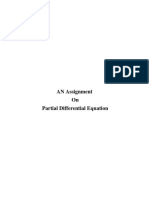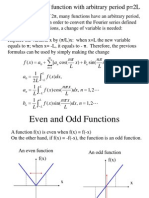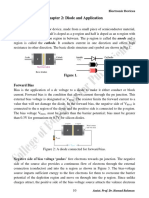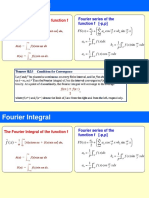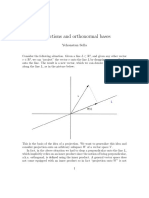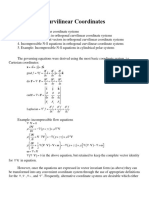0% found this document useful (0 votes)
313 views8 pagesComplex Line and Path Integrals
The document discusses evaluating line integrals along different paths. It provides the solutions to 4 problems:
1) Evaluating a line integral along 3 paths between points (0,3) and (2,4). The integral equals 33/2, 12, and 97/6.
2) Evaluating a line integral of z along a curve between points (0,0) and (4,2i). The integral equals 10-8i.
3) Stating the problem of evaluating a line integral along 2 paths between points (1,1) and (2,4).
4) Evaluating an integral between 0 and 1+i along 2 paths, showing the results are the same
Uploaded by
সায়েম মুহাম্মাদCopyright
© © All Rights Reserved
We take content rights seriously. If you suspect this is your content, claim it here.
Available Formats
Download as PDF, TXT or read online on Scribd
0% found this document useful (0 votes)
313 views8 pagesComplex Line and Path Integrals
The document discusses evaluating line integrals along different paths. It provides the solutions to 4 problems:
1) Evaluating a line integral along 3 paths between points (0,3) and (2,4). The integral equals 33/2, 12, and 97/6.
2) Evaluating a line integral of z along a curve between points (0,0) and (4,2i). The integral equals 10-8i.
3) Stating the problem of evaluating a line integral along 2 paths between points (1,1) and (2,4).
4) Evaluating an integral between 0 and 1+i along 2 paths, showing the results are the same
Uploaded by
সায়েম মুহাম্মাদCopyright
© © All Rights Reserved
We take content rights seriously. If you suspect this is your content, claim it here.
Available Formats
Download as PDF, TXT or read online on Scribd
/ 8






